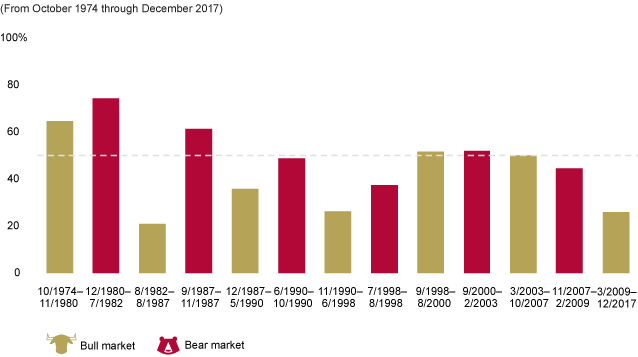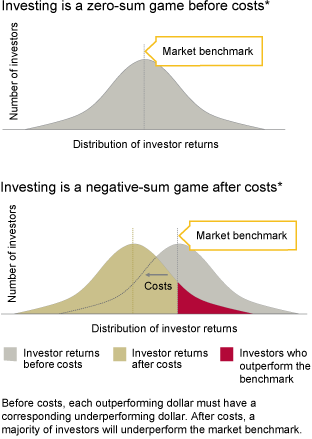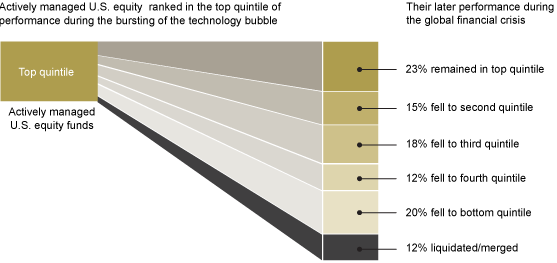There are good reasons to invest with active management. We know, because we’ve been in the active management business since our beginning more than 40 years ago. Our first mutual fund was the actively managed Vanguard Wellington™ Fund, which was founded in 1929 and is the nation’s oldest balanced fund.
Q3 hedge fund letters, conference, scoops etc
We find that all types of investors often believe in certain myths about active management. Many of those myths can be dispelled by one or more of four realities: the zero sum game, the advantage of low cost, the paradox of skill, and the cyclical nature of the market. In this article, we want to look at one of the common investor myths, which is the notion that active management will typically outperform during a market swoon.
Why wouldn’t active do better in bear markets?
To understand why this myth may not hold up under scrutiny, let’s first remember that all investing is a zero-sum game.
Across any market, there is a range of returns. Yet for every dollar of outperformance there must be a dollar of underperformance. Therefore, it stands to reason that some investors (and active managers) will do better than others, and results tend to follow a normal distribution curve with investors grouped around the market return, which is the average of all the results. For some investors to obtain a return greater than the market return, others must receive less.
*Costs are represented by fund expenses and taxes.
But then there is a cost to investing that, as a matter of simple math, must detract from investor returns versus the return of the costless market benchmark. Hence, the distribution curve will shift to the left. All managers, active and index, face the cost hurdle in any market environment, including bear markets. The greater the cost, the greater the hurdle.
So what are the results?
The data show that, as a group, a majority of active managers do not always outperform in bear markets.
There have been some bear markets during which more than half of active managers outperformed and others during which they did not. More recently, 52% of active managers outperformed during the dot-com crash, but just 44% of active managers outperformed during the global financial crisis. Both bear markets were quite different in how they affected parts of the stock market, and those differences affected active managers as well. You can see from the graphic below that only a quarter of those active managers who outperformed during the dot-com bust were able to replicate that outperformance during the next bear market. The simple reality for investors is that trying to time success with active management, or pick active managers because of their performance in the last bear market, is not a recipe for success.
Percentage of active managers outperforming during bull and bear cycles
Source: Vanguard calculations, using data from Morningstar, Inc.; S&P Dow Jones Indices; MSCI; and CRSP.
Note: The U.S. stock market is represented by the Dow Jones Wilshire 5000 Index through April 22, 2005; the MSCI US Broad Market Index through June 2, 2013; and the CRSP USTotal Market Index thereafter.
Persistence from one bear market to the next is difficult
Source: Vanguard calculations, using data from Morningstar, Inc.
Note: Top quintile performance of active U.S. equity funds in each of the nine Morningstar style categories based on their excess returns relative to their stated benchmarks during the technology bust bear market from September 2000 through February 2003 compared with their relative performance during the bear market from November 2007 through February 2009.
Read the full article here by Chris Tidmore of Vanguard, Advisor Perspectives



